#irishhistory
Text
#OTD in Irish History | 22 April:
1365 – Lionel returns to England, leaving Ormond as his deputy.
1671 – An English Navigation Act prohibits direct importation of sugar, tobacco and other produce from the colonies to Ireland; act expires in 1681 but is renewed in 1685 and extended in 1696.
1717 – John Marshall, a successful attorney and father of Robert Marshall, a future MP for Clonmel and an executor of Hester Vanhomrigh…
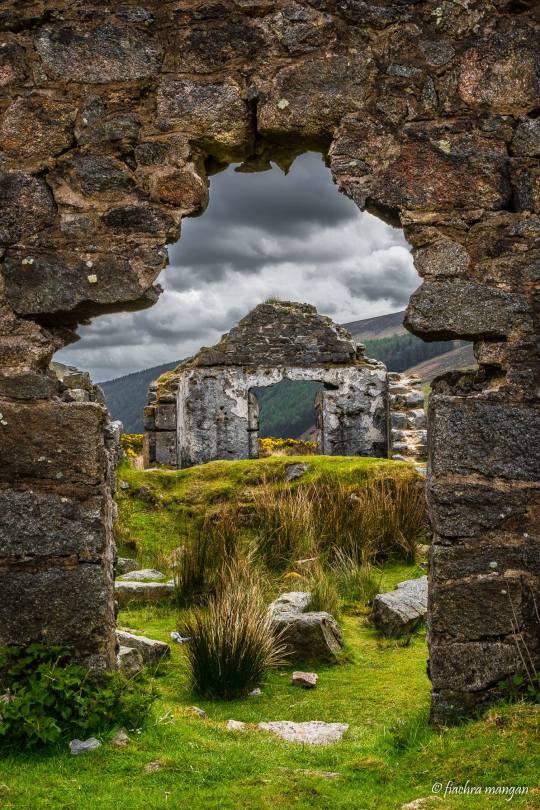
View On WordPress
#irelandinspires#irishhistory#OTD#1916 Easter Rising#22 April#Co. Tyrone#Daniel O&039;Connell#Dungannon#Hill of the O&039;Neill#History#History of Ireland#Ireland#Irish Civil War#Irish History#Sinéad O&039;Connor#Today in Irish History
11 notes
·
View notes
Photo

If you think Irish step dancing (aka Riverdance) and tap dancing have something in common, they do—their origins. As West African gioube dancing mutated into the American jig and juba during antebellum times, one theory is that it fused with the traditional dances of Irish immigrants who often lived and worked in the same spaces as enslaved people or free Black laborers. This combination of syncopated rhythms developed into popular 19th- and 20th-century entertainment, from minstrel shows to jazz revues to Broadway musicals, right on down to 21st century TikTok star and dancer Morgan Bullock. #stpatricksday #dancehistory #blackhistory #irishhistory #americanhistory #goodblacknewscalendar https://www.instagram.com/p/Cp53f4ZyNS_/?igshid=NGJjMDIxMWI=
25 notes
·
View notes
Photo
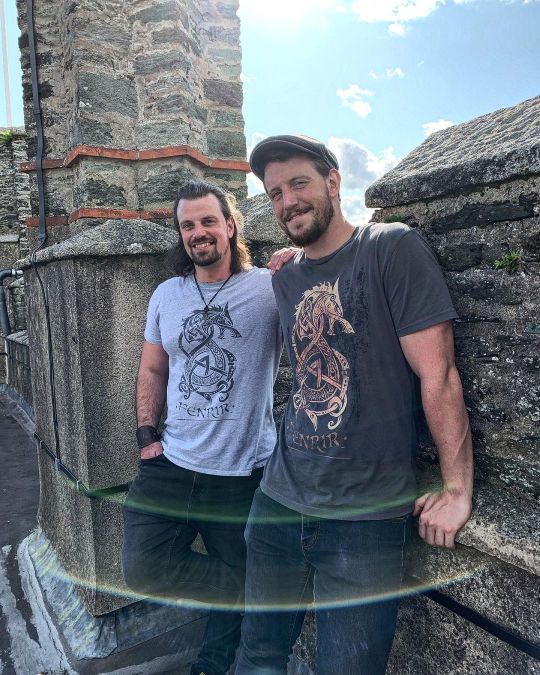
Three years ago today my brother and I realized a life long dream of traveling to Ireland and seeing the castles our ancestors occupied centuries ago. It’s hard to describe how amazing it was visiting Enniscorthy and Ferns Castles in Co. Wexford. The weather was also as perfect making it feel like that day was meant to be. Can’t wait to go back! 🇮🇪 . . @enniscorthycastle @fernsvillage @medievalfernsexperience ➖ #celtichammerclub #ireland #countywexford #irishcastles #fernscastle #enniscorthycastle #ferns #enniscorthy #travel #travelgram #brothers #irishancestry #irishancestors #irishhistory (at County Wexford, Ireland) https://www.instagram.com/p/Chzs5MErcu4/?igshid=NGJjMDIxMWI=
#celtichammerclub#ireland#countywexford#irishcastles#fernscastle#enniscorthycastle#ferns#enniscorthy#travel#travelgram#brothers#irishancestry#irishancestors#irishhistory
9 notes
·
View notes
Photo

Taranis, the Celtic god of thunder: . Taranis (who's name means 'thunderer')In celtic mythology, taranis, is the god of thunder, who was worshipped primarily in Gaul, Gallaecia, Britain, and Ireland but also in the Rhineland and Danube regions, amongst others. Taranis, along with Eaus and Toutatis as part of a sacred triad, was mentioned by a poet Lucan in his epic poem as a Celtic deity to whom human sacrificial offerings. Monuments to Taranis have been found all over the Celtic world from the Adriatic coast to the northern regions of Britain. Taranis is usually depicted with his symbol, the cross (also multiple crossed) wheel. The word "taran" is still used in modern Welsh and Breton to mean thunder. . Photo: @juhanikalervonpoika thank you! Check out his page! . _________________ 🔔 Turn on post notification 🔔 ➖➖➖➖➖➖➖➖➖➖➖ - DON’T FORGET TO: 😊 - ❤️LIKE 💬COMMENT 🚩SAVE ➖ ☑️ Checkout the link ↙️ @nord_blod for my craft shop !! ☑️ And discover my Blog and my best books about the Nordic mythology and viking story. ↙️ Link in my bio: @tyrenis_northern_shaman Website ↙️ www.northern-shaman.org . . . #vikings #celticgods #viking #norse #irishhistory #deities #celticwarrior #anglosaxon #celticgod #pagan #vikingwoman #taranis #mythsandlegends #cuchulainn #celticwomen #godofthunder #pagansofinstagram #celticgods #celticshamanism #celticwarrior #vikingmythology #mythology #tuathadedanann #folktale #celticfolklore #fertilitygod #folklore #celticmythology #deity #heathen #thundergod _________________ https://www.instagram.com/p/Cj25usgt81z/?igshid=NGJjMDIxMWI=
#vikings#celticgods#viking#norse#irishhistory#deities#celticwarrior#anglosaxon#celticgod#pagan#vikingwoman#taranis#mythsandlegends#cuchulainn#celticwomen#godofthunder#pagansofinstagram#celticshamanism#vikingmythology#mythology#tuathadedanann#folktale#celticfolklore#fertilitygod#folklore#celticmythology#deity#heathen#thundergod
2 notes
·
View notes
Video
youtube
An Irish Assassin Story
News of the Times Episode 289 | 1837
1837 County Carlow, Ireland, and Wiilliam McGrath has returned to his home town where he sees his brother, now successfully running their now deceased father’s business. William is filled with anger and resentment.
Staying at his friend’s house, he offers his friend and the father £100 to act as assassins and get rid of his brother, thereby leaving the extensive business and property in the hands of William. This unique type of case brought in over 2000 visitors in torrential rains to watch the botched hanging. We take a look at the background, the crime and the capture of the Irish assassins in today’s episode of Wicked Wednesdays. We hope you enjoy the show!
Hosted by Robin Coles
#youtube#assassins#irishhistory#ireland#historicaltruecrime#historicalcrimedocumentary#victorianmurders#historicalcrimestories#victoriancrimestories#newsofthetime
1 note
·
View note
Text
Tomorrow is St. Patrick's Day ☘️ and I was recently invited back to The Boston Courier for an interview on the enduring fascination with Irishman Michael Collins and Irish American JFK. I appreciate the invitation to return!
"In one of your blog posts, you wrote: 'Feel free to stop me when this story sounds an awful lot like a prominent one from American history that I talk about often. A man of war becomes a man of peace . . . he challenges the status quo . . . he goes into hostile territory in an open vehicle . . . he doesn’t survive the trip . . .' This is a clear reference to John F. Kennedy, yes?
Indeed, it is."
0 notes
Text
BLACK '47 (2018)
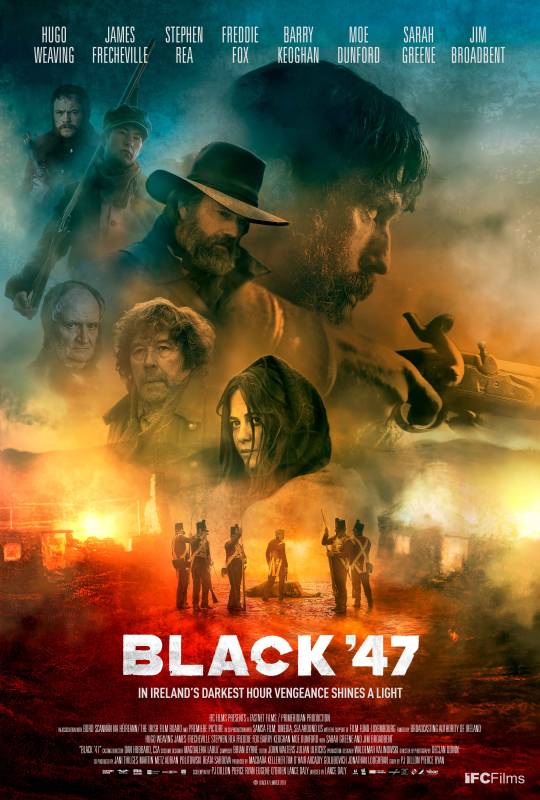
Black '47 (2018): Revenge Feast in a Famine Landscape
Title: Black '47 (that apostrophe is fierce, much like the film)
Genre: Historical Revenge Thriller (think "Peaky Blinders" meets "The Grapes of Wrath")
Year: 2018 (fresh enough to make you say, "Wait, didn't see this?")
Runtime: 1h 36m (short, sharp, leaves you reeling)
Country: Ireland (duh, but prepare for accents thicker than Guinness stew)
Plot (spoiler-free!): Imagine "John Wick" in 1847 Ireland, during the Potato Famine's darkest year. Our boy Feeney, an Irish soldier fighting for the Brits abroad, ditches his post to find his starving family. What he finds is...well, let's just say hell hath no fury like an Irishman scorned (and hangry).
Memorable Scene: Picture this: Feeney, eyes blazing like peat fires, takes down a British landlord's posse in a rain-soaked field. Think Tarantino crossed with a jig (seriously, there's a fiddle fight).
Trivia Tidbit: Director Lance Daly's first feature film? A little Irish number called "An Ranger," which inspired Black '47. So, like, full circle moment, ya know?
Internet Buzz: Critics loved the raw power and unflinching portrayal of the Famine. Audiences? Cheered at the bloody comeuppances (sorry, spoilers!).
My Two Cents: ⭐⭐⭐/5
Breathtaking Scenery: Ireland's rugged beauty becomes a character in itself, both hauntingly desolate and fiercely alive.
Acting Feast: Hugo Weaving and James Frecheville chew the scenery (and each other) with gusto. Supporting cast is equally stellar, like a bowl of hearty stew with no weak potatoes.
History on Point: The film doesn't shy away from the brutal realities of the Famine. It hurts, it's real, but it's also a powerful reminder of resilience and the fight for justice.
Black '47 isn't for the faint of heart, but if you like your history raw, your revenge served cold, and your landscapes epic, dig in. Just don't forget the napkins (for tears and maybe spilled stew).
0 notes
Text
Step Back in Time: A Royal Feast at Bunratty Castle
Welcome to Bunratty Castle, where the echoes of centuries past still resonate through its ancient corridors. Join us as we uncover the tale of a historical banquet that graced these storied walls in the heart of the Irish countryside.
In the year 1604, the eminent Earl of Thomond extended a gracious invitation to nobles, dignitaries, and esteemed guests from far and wide, asking them to take part in a feast that would be remembered for ages to come. As the sun dipped below, casting a golden glow upon the castle's turrets, the evening's festivities began.
Visit Bunratty Castle where you can relive the famous banquet through immersive re-enactments and theatrical displays that evoke the spirit of that era. The legacy of this remarkable event endures, captivating your hearth and your imagination when you wander through Bunratty's corridors.
0 notes
Text
Carmel unravels the enigma of her emotional suffering as she delves into an exploration of historical traumas from past lifetimes, taking a closer look at the impact of ancestral emotional wounds that we carry.
Are you a member of a book club? If so, do you meet virtually or in person?
I attend a book club run by Pangur Bán Bookshop in conjunction with Craoibhín Ballina. We meet in person once a month.
At our last book club meeting we talked about In Ordinary Time by Carmel McMahon. If you’ve read the book, I’d love for you to share your opinion in the comment box at the end of the post.
Continue…
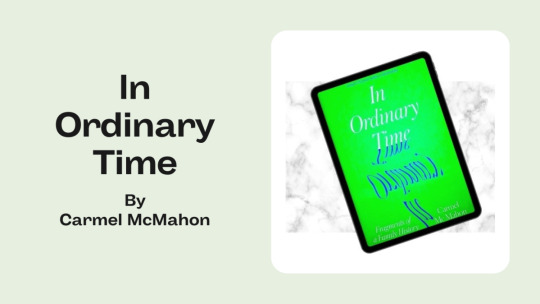
View On WordPress
0 notes
Text
Ruins of the O’Davoren Law School | Cahermacnaghten, Co Clare
The Ó Duibhdábhoireann (O’Davoren) family were scholarly clan of Corcomroe, Thomond (modern-day Co Clare), active since medieval times.
Famed for their sponsorship of schools and knowledge of history and Early Irish law, the Uí Dhuibh dá Bhoireann were known throughout Ireland as a literary family and held estates in the Burren down to the mid seventeenth century at the time of the Cromwellian…
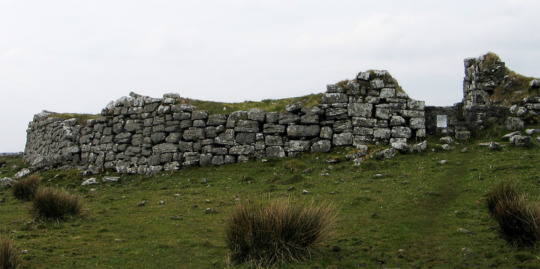
View On WordPress
#BrehonLaw#irishhistory#Ancient Irish Law#Brehon Law#Burren#Cahermacnaghten#Co. Clare#Gaelic Law#Ireland#Irish#Law School#The Ó Duibhdábhoireann (O&039;Davoren) family
15 notes
·
View notes
Photo

Happy St. Patrick’s Day! ☘️ If you are looking for some traditional Irish recipes with some stories from history attached we’ve got quite a few over on the blog. ☘️ on of our favorite’s is Annie’s Wine Baked Brisket and the story of how corned beef became a staple St. Pat’s day food in America. ☘️ Other equally delicious recipes include Current Scones with Fresh Strawberry Preserves, Potato and Leek Soup, Irish Soda Bread from the kitchen of Katharine Hepburn, Lime and Watercress Soup, Smoked Salmon and Goat Cheese Roulade, Homemade Seafood Sausages and a vintage Irish cocktail called the Black Velvet. Find all these in the Vintage Recipes section of the blog! ☘️ Erin Go Braugh in food and fun! . . . . . #stpatricksday #stpats #irishfood #cornedbeef #eringobragh #slainte #irishhistory #ireland🍀 #irishrecipes #irelandfood https://www.instagram.com/p/Cp5inlruy19/?igshid=NGJjMDIxMWI=
#stpatricksday#stpats#irishfood#cornedbeef#eringobragh#slainte#irishhistory#ireland🍀#irishrecipes#irelandfood
0 notes
Photo

Happy St Patrick's Day! KC has a robust Irish/ Irish descendant population. In fact, the oldest Irish business in America is in KC and it's still in business @brownesirish Listen to the Pendergast saga from Series 2 to learn about one of KC's most famous Irishmen! Homegrown KC is a podcast dedicated to exploring Kansas City's fascinating history and sharing stories from its rich past. It is available wherever podcasts can be found including but not limited to Audible, Amazon Music, Google Music, Pandora, Spotify, and Apple Podcasts. To become a patron supporter subscribe to redcircle.com/homegrownkc or patreon.com/homegrownkc. Subscribers get access to exclusive bonus episodes featuring other local historians, archivits, and museum professionals. They also receive an item from the merchandise store valued at 5$ or less, and a shout out on every episode and social media post. Or you can give a one time donation at redcircle.com/homegrownkc or Ko-fi.com/homegrownkc. All donors will receive a shout out. And 1% of all Ko-Fi donations will go to fight climate change. To see what merchandise is available, go to zazzle.com/store/homegrown_kc_store. For more information on each topic, visit my website: homegrownkc.wordpress.com. and sign up for my monthly newsletter on my website as well. Like, follow, and subscribe to the show on Facebook, Instagram, Twitter, Pinterest, Tumblr, and Youtube. Rate and Review the show where you listen, especially on Apple Podcasts. Thank you Bjorn, Joan, and Thomas for your support. Thanks also goes to Sarah McCombs for the creation of my logo; the Dear Misses for use of their song Kansas City, as the intro and outer music of the show; to local libraries; and to all my wonderful listeners. Cheers! #homegrownkc #communityhistory #stateandlocalhistory #kchistory #kcproud #historypodcast #podcastersofinstagram #irishheritage #irishhistory #pendergast #stpatricksday https://www.instagram.com/p/Cp5fAztOQIk/?igshid=NGJjMDIxMWI=
#homegrownkc#communityhistory#stateandlocalhistory#kchistory#kcproud#historypodcast#podcastersofinstagram#irishheritage#irishhistory#pendergast#stpatricksday
0 notes
Photo

1st Hike of the year. Knockfierna , the Famine trail in Co Limerick. . . . . . . . #hiking #famine #mountains #mountain #irishhistory (at Limerick, Ireland) https://www.instagram.com/p/Cm4aSYpKJjX/?igshid=NGJjMDIxMWI=
0 notes
Video
youtube
Tales of Women Killers in Ireland
Tales of Women Killers in Ireland
News of the Times Episode 269 | 1881 - 1902
In today’s episode we look at three cases where women were the murderers. Our first case from Derry 1881 tells the take of an 80 year old man who has committed suicide according to his 40 year old wife. Did the man even have the strength to pull a trigger is one of the many questions that arise in this case.
Our second story takes place in 1887 Galway where nurse Mary Rielly is discovered literally cooking her patient alive.
Our last case from 1902 involves a love triangle that the husband falls victim of. What is astonishing in this case is the role of the children…
Three cases of murderous women of Ireland exacting the ultimate crime is today’s episode of Frightful Fridays.
Hosted by Robin Coles.
#ireland#irishhistory#historicaltruecrime#historicalcrimedocumentary#victorianmurders#historicalcrimestories#victoriancrimestorie#newsofthetimes
1 note
·
View note
Text
If Jackson Street could talk
By Jonathan Monfiletto
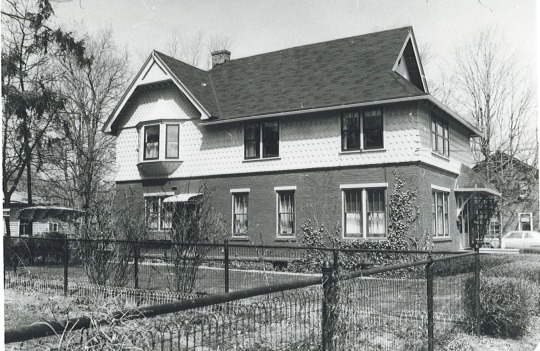
According to an article in our subject files at the Yates County History Center dated April 1998, Yates County then had the smallest nonwhite population by percentage of any county in New York State. Based upon what I know, despite being still new to Yates County and its history, I can’t imagine much has changed in the nearly 25 years since, so Yates County probably still retains this dubious distinction.
However, it wasn’t always this way; for a period of time, Yates County had a pretty significant Black population – especially in the village of Penn Yan – as the area gained a reputation for being hospitable to fugitive slaves escaping the South through the Underground Railroad, seeking shelter either permanently or temporarily before moving on to Canada and elsewhere. Several Black families called Penn Yan home for much of the 19th century – and beyond, in some cases – and some Black people found work as teamsters and coachmen with the affluent families living along upper Main Street.
Many of these families built homes on a narrow alley running parallel to and behind Main Street between Head Street (now called North Avenue) and Court Street. This alley was originally called Back Street and later Jackson Street and is today known as Linden Street. The small houses sat on small lots on the east side of the street, with their backyards running down to Jacob’s Brook. On the west side of the street, a row of carriage houses at the rear of Main Street lots faced these residences and often provided employment for the Black residents or even extra housing in upstairs apartments.
Several prominent Black residents lived on Jackson Street for decades; they included the barber Henry Garner, a native of Kentucky; John Thomas, born in Maryland; John Saunders, of Virginia; and John Minisee, of New York City. Other local Black families, such as the Maxfields, the Frames, the Dallases, and others, lived elsewhere in the village. Irish immigrants in Penn Yan also called Jackson Street home in the 19th century and worked in the big houses on Main Street alongside their Black neighbors.
In fact, according to a March 2013 article by local historian Rich MacAlpine, there were a little more than 300 Irish-born people living in Yates County by 1850, with the vast majority of these people living in Penn Yan and often along Jackson Street. Irish immigrants also lived across the Keuka Lake canal and outlet near Franklin and Sherman streets in a neighborhood that became known as Dublin. The population of Irish immigrants more than doubled to 700 in 10 years, and by the 1890s Irish-born residents still made up the largest foreign-born group in Yates County.
Garner probably built his house on the corner of Jackson and Court streets himself; its elements featured a style popular in the border South where Garner was raised. Minisee lived next door, having been born in Duchess County and descended from several generations of free Blacks from New York City. Minisee’s parents had a farm in Jerusalem, and when his mother died, the whole family moved to Michigan to join relatives there. Minisee returned to Penn Yan to join a Civil War regiment there. Garner’s home was demolished to provide more parking space for the Public Safety Building, while Minisee’s home was razed by a successor corporation of the Gas Works. The next two homes were built toward the end of the 19th century and torn down years ago.
Thomas lived at 111 Jackson Street, and his home still stands and was – as of the 1998 article – still the original size and shape as the little house he built with his own hands in 1842, shortly after arriving in Penn Yan following his escape from slavery. Saunders, a local teamster, lived next door to Thomas, having arrived a little later than Thomas but living there nearly as long. This home, too, still stands and remains much the same. The last house on the block was home to a succession of Irish immigrant families throughout the century, and it stood adjacent to the horse sheds of the Episcopal Church on Main Street. This spot was apparently a makeshift hangout for the neighborhood kids, who hid behind the sheds and smoked cigarettes with the Thomas and Saunders boys.
Once the rural economy gave to manufacturing around the turn of the 20th century, many of the Black families living in Penn Yan left the area. The political tides also turned against them; the Republican Party – once known for its commitment to the containment of slavery and drawing abolitionists and other reformers to its cause – abandoned its platform of aiding former slaves by the middle of the 1870s and enhanced its orientation toward big business.
The neighborhood that once was Jackson Street is adjacent to Penn Yan’s Historic Preservation District, and an attempt was made to add this block of houses to the district as a reasonably well-preserved working-class neighborhood. However, this effort was cut short by the demolitions that took place in 1995.
The street was renamed Linden Street possibly in an attempt to erase the somewhat hard reputation of the neighborhood. A newspaper article from March 6, 1952 states the village trustees agreed to rename the street following a petition presented by residents of Jackson Street. It is unclear who Jackson was, who Linden was, and why exactly the street was renamed.
The 1998 article ends with an eloquent and perhaps poignant tribute to the Jackson Street neighborhood: “It’s still very easy to imagine how the narrow lane must have looked a century ago, unpaved and lined with big trees, the big carriage horses standing to be hitched, the mixture of drawl and brogue, and barefoot children everywhere.”
0 notes
Photo

poulnabrone dolmen is the largest & best preserved of irelands roughly 172 dolmens, or pass through tombs. this was likely to be a ritual site for neolithic era inhabitants & the partial remains of roughly 33 people have been found nearby. • • #ireland #irishhistory #poulnabronedolmen #travel #photography #travelphotography #wander #explore #theburren #nikonusa (à Poulnabrone Dolmen) https://www.instagram.com/p/CgHzzdPJ0Gm/?igshid=NGJjMDIxMWI=
#ireland#irishhistory#poulnabronedolmen#travel#photography#travelphotography#wander#explore#theburren#nikonusa
0 notes